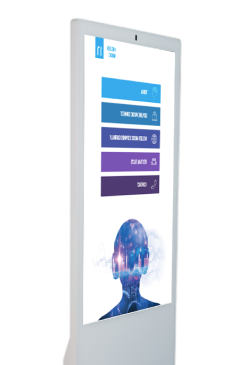

Event Solutions

Our Work

4 Common Types of Touch Screens Used in Business Around The World
Touch Screens have become normal in our daily lives: cell phones, ATMs, airport kiosks, ticket vending machines, and more all use touch panels to allow the user to interact with a computer or device without having to use a keyboard or mouse. But did you know there are numerous uniquely different types of touch screens? All the options of touch screen technology carry their own unique characteristics, with specific benefits to your business. Capacitive Touchscreen Frequently utilized for industrial purposes, capacitive touch screens entail a glass overlay, coated with a conductive material such as Indium Tin Oxide. Contact with a capacitive screen generates an electrostatic charge that sends data to the touch control in order to perform its function. This type of touch screen has great clarity and resilience, except they can only respond to the touch of a finger or special gloves unless it is capacitive charged. Infrared Touchscreen Unlike the other types, infrared touch screen technology does not include an overlay. Instead, a frame surrounding the display contains LEDs on one side and phototransistor detectors on the other. The phototransistors sense an absence of light and convey a signal that determines the coordinates. The touch is recognized and located at the point of interruption of the LED beams. Usually used in outdoor locations, infra-red touch screens are long-lasting and can detect any input. Acoustic Pulse Recognition Touchscreen This touch screen is made with a glass overlay and four transducers attached to the back exterior. When the screen is touched, the friction generates acoustic waves. The transducers detect the acoustic wave, which is then transformed into a signal. APR touch screens are water-resistant, tough, and scalable. 5-Wire Resistive Touch is the most commonly used touch technology today. A resistive touch screen monitor is composed of a glass panel and a film screen, each covered with a thin metallic layer, divided by a narrow gap. When a user touches the screen, the two metallic layers make contact, causing an electrical flow. The point of contact is identified by this change in voltage. Surface Acoustic Wave Touch Screen SAW touch screen technology is based upon two transducers and a reflector placed on the glass surface. The waves are spread across the screen by bouncing off the reflector arrangement and received by the transducers. The touch is detected when the waves are enthralled. In contrast with the other touch screens; SAW provides greater clarity, resolution, and sturdiness, with the capability to interact with a stylus or gloves. For more information about this technology, including how it’s used in our touchscreen kiosks, please get in touch.